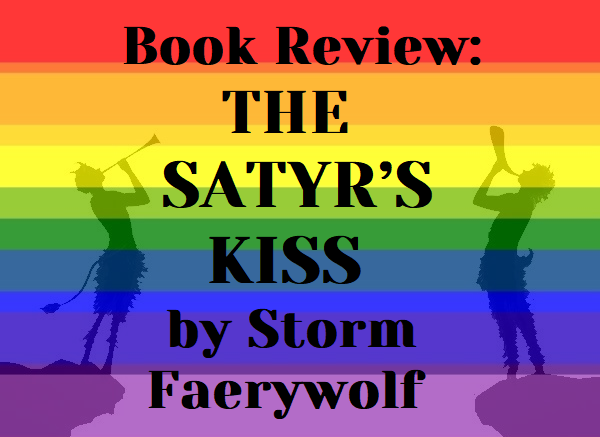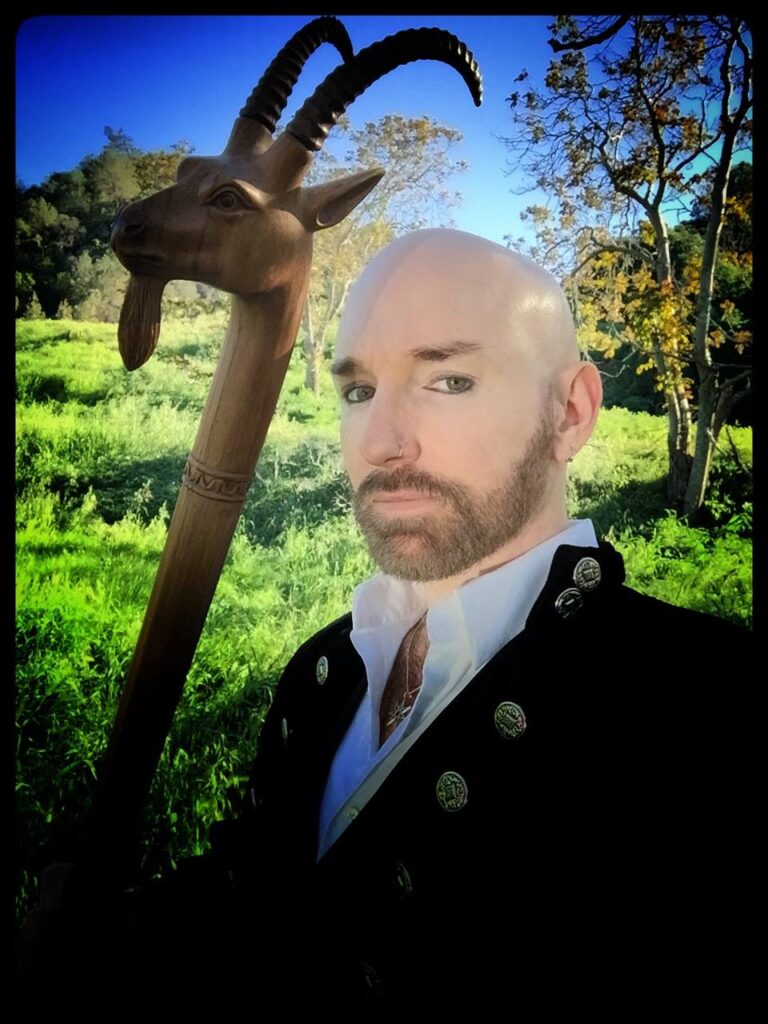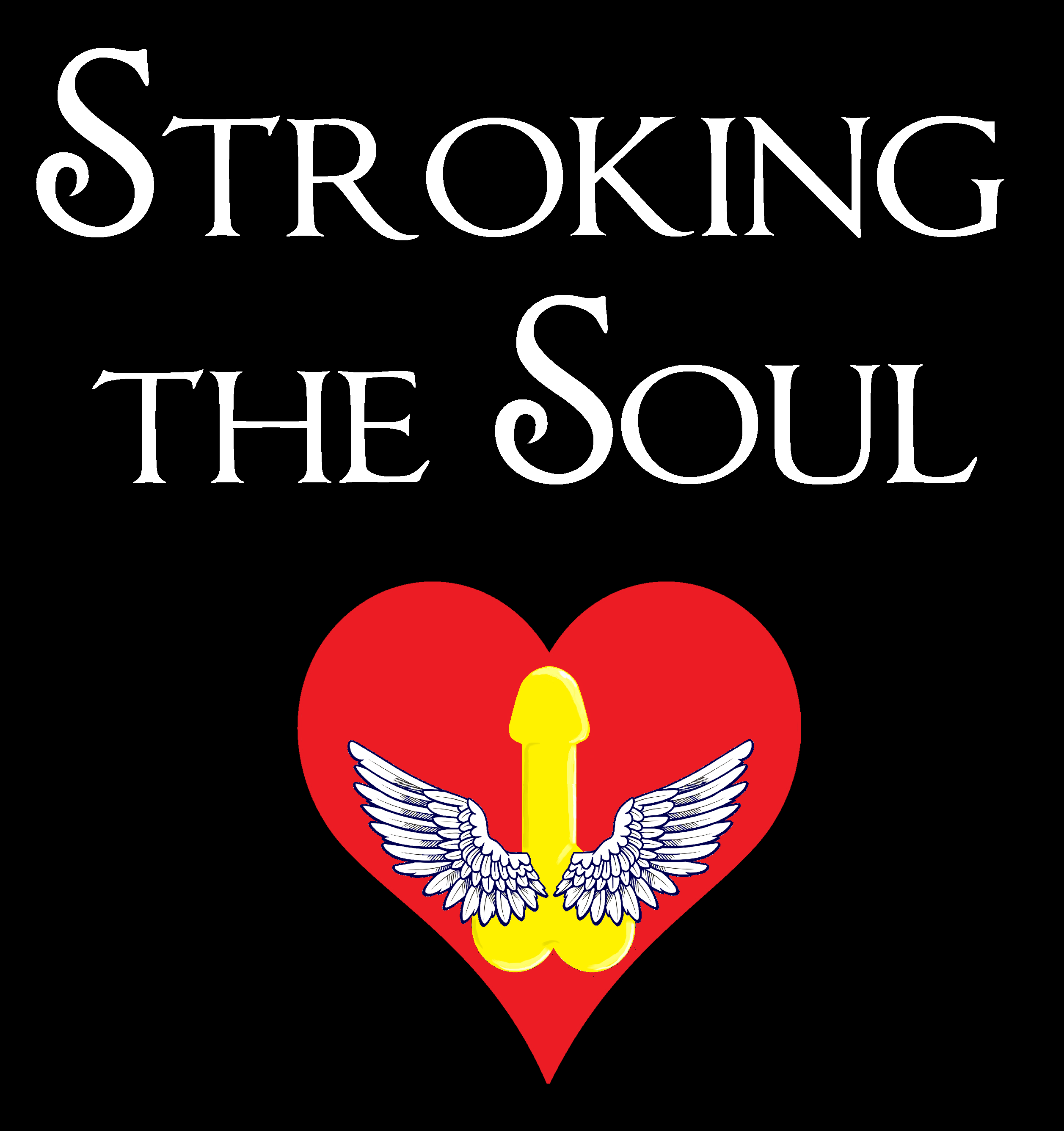
Book Review: The Satyr’s Kiss by Storm Faerywolf
Happy Pride Month! Let’s celebrate with a book review! The Satyr’s Kiss: Queer Men, Sex Magic & Modern Witchcraft was released exactly one month ago, and I bought it as a birthday present for myself. I’ve been very excited about this book since its author, Storm Faerywolf, first announced it last year. A gay Witchcraft book that doesn’t shy away from the topic of sex magic? That’s right up my alley. It was my most anticipated book of the year.
The Satyr’s Kiss is an exploration of queer identity through Witchcraft. It is about reclaiming our magic as GBTQ men in a predominantly straight world. Many occult books gloss over this subject, treat it as an afterthought, or worse, attempt to analyze it through a heterocentric lens. Storm strives to correct this by challenging those narratives and uplifting the queer experience.
If there’s one thing that Witches and gay men have in common, it’s that we love symbols. In the queer community, we have many symbols of empowerment, identity, advocacy, progress, and change. Storm takes a look at several gay symbols and demonstrates how to incorporate them into ritual and magical practices. Some of these—including the triangle, rainbow, double Mars sign, and the Greek letter lambda—have significant occult meanings.
He also explores the power of myth and its relevance in our lives. We often think of mythology as something from the past, but we are living mythology every day. The ancient archetypes still ring true in many ways, and the stories are rich with symbolism and deeper meaning beyond their surface value. Storm provides information about several gods, heroes, and saints who are blatantly or symbolically queer, including Antinous, Pan, Heracles, and St. Sebastian, as well as mythological creatures such as fairies, unicorns, and of course, satyrs.
He then progresses the concept of queer myth into the present day with gay icons and modern divas such as Madonna, Lady Gaga, and Lil Nas X, who we elevate to god-like status. He also mentions Stevie Nicks, who has been the ultimate rock and roll icon in my life since I was at least 13 years old. Her romantic lyrics, mystical imagery, and distinctive voice have always resonated in the deepest parts of my queer little soul.
We also venerate fictional characters in a similar way, and a couple of examples in his book are torn from the pages of my own life. To Storm, Lynda Carter’s Wonder Woman is a modern-day goddess, which she truly is. Fierce, righteous, and bodacious—all qualities that many gay men strive to embody. My roommate also adores Wonder Woman, and has an altar of sorts with various paraphernalia (some of which I gifted to him).
Another example is Ursula the Sea Witch, who was modeled after the legendary drag queen, Divine. Queer coding villains is a trope left over from the Hays Code of the 1930s, but Disney is exceptional in that these characters were created by gay men such as the amazing Howard Ashman. Many gay men identify with villain characters because of their campiness, cunning charm, and grandiose musical numbers. Ursula is my favorite Disney villain, and she has the best villain song (to which I know every word, of course).
Whether hero, villain, or someone in between, these characters become threads of mythology that are woven into the tapestries of our lives.
It is important for us to learn from queer history and recognize the struggles and contributions of those who paved the way for us and helped shape who we are today. An integral part of many spiritual traditions is honoring the ancestors. Storm refers to our queer predecessors as the Rainbow Dead, which includes important figures like Harvey Milk, Larry Kramer, Gilbert Baker, and Matthew Shepard. As a writer, two of my muses are Walt Whitman and Oscar Wilde. I have a couple of cutouts in their likenesses that I include on my altar sometimes for creative inspiration and on special days of commemoration.
The Satyr’s Kiss also presents a queer-centric perspective on the Wheel of the Year. The eight contemporary Pagan holidays are inspired by ancient agrarian festivals celebrating the seasons and the fecundity of the Earth in correlation with the cycles of life and human sexuality. The fertility themes are well-rooted in heteronormativity, although they needn’t be so. Still, this may present a problem for queer Witches who don’t identify with these themes. In the book, Storm says, “In addition to the cycles of nature we must also allow for the cycles of culture.”
He points out that Witchcraft is not only about fertility, it is also an ecstatic tradition. Alleged accounts of the infamous “Witches’ Sabbaths” during the Middle Ages feature nudity, dancing, feasting, orgies, and all kinds of debauchery. Likewise, many gay men celebrate their own Dionysian delights in queer spaces like gay bars and bathhouses. Another parallel between the Witches of yore and gay men of recent is that these spaces also provide sanctuary for members of a marginalized community.
One of my favorite parts of the book is his beautiful interpretation of the Oak King and Holly King, who personify the light and dark halves of the year. This concept comes to us primarily from The White Goddess by the English poet, Robert Graves (who, it must be noted, was openly bisexual). In the original mythos, the two kings battle twice a year, and one slays the other to usurp the throne. In Storm’s updated narrative, they embrace passionately as lovers, and symbolize the symbiosis of our interpersonal relationships, as well as aspects of our inner polarity.
Finally, let’s talk about sex magic, which is the main reason I was excited about this book! Storm does a fantastic job explaining the hows and whys of sex magic. I was pleased to discover that his views are very similar to mine, and we are writing about many of the same topics. I also found several of his ideas refreshing, including his perspectives on porn, kink, and sex toys within the sacred space. Sex toys are simply ritual tools, and I love his suggestion about dedicating a dildo to a particular god or spirit.
The book is replete with exercises, spells, and rituals that are accessible to both the beginner and the experienced. One cool feature is that sometimes he provides both a sexual version (“Red Rite”) and a non-sexual version (“Blue Rite”), so there are options for different preferences. He also includes a generous variety for couples, groups, and solo. This is especially important to me as one of my motivations for writing my own book (cumming soon) is that most sex magic books focus on couples and eschew solo sex beyond a brief mention.
The Satyr’s Kiss is a well-rounded tome that is at once fun, endearing, empowering, enlightening, and sometimes serious. Storm Faerywolf has stated in several podcast interviews that this was the first book he wanted to write when he was a fledgling queer in the Craft, but he wasn’t ready for it yet. Thank the Blue God that he waited until the time was right because his wisdom, experience, and poetic truth shine through brilliantly.
As I said at the beginning of this review, I was highly anticipating this book. When it arrived, I was not disappointed. It is everything I had hoped for and more. I highly recommend it.

The Satyr’s Kiss: Queer Men, Sex Magic & Modern Witchcraft
by Storm Faerywolf
Foreword by Christopher Penczak
Llewellyn Publications
May 8, 2022
Purchase The Satyr’s Kiss
More information on Storm Faerywolf
- Faerywolf – Official Website
- Llewellyn
- GoodReads
- The Wild Hunt
- Modern Witch University


Thank you very much! I am so glad you enjoyed it.